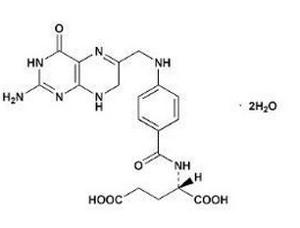Tel: 186-2629-6728
0512-58790813
Fax: 0512-58631806
E-mail:
jszjgct@126.com (business)
fischaelyu@163.com (technical)
Address: 824, Block C, Tianba Business Hall, No. 115, Shazhou West Road, Yangshe Town, Zhangjiagang City
Tel: 186-2629-6728
0512-58790813
Fax: 0512-58631806
E-mail:
jszjgct@126.com (business)
fischaelyu@163.com (technical)
Address: 824, Block C, Tianba Business Hall, No. 115, Shazhou West Road, Yangshe Town, Zhangjiagang City
1. Glucose oxidase: Glucose oxidase can be prepared from fungi such as Aspergillus niger and Penicillium. It catalyzes the oxidation of glucose by consuming oxygen from the air, so it can go out of glucose or oxygen.
For example, glucose oxidase can be used in egg production to remove glucose while preventing product discoloration; it can make fried potato chips golden yellow rather than brown; it can also go out of the oxygen in the packaging system to inhibit the oxidation of fat and natural pigments. degradation. For example, the color of crab meat and shrimp can be suppressed from pink to yellow.
2. Catalase: Catalase is mainly extracted from the liver or microorganisms, which can decompose hydrogen peroxide to form water and oxygen. Hydrogen peroxide is a by-product of foods treated with glucose oxidase and some compounds that are added to foods by special filling processes. For example, milk can be pasteurized with 22HO and excess 22HO can be eliminated with catalase.
3. Aldehyde dehydrogenase: When soybean is processed, a volatile degrading compound (n-hexanal, etc.) having a cardamom taste is produced due to enzymatic oxidation of the unsaturated fatty acid, and if acetaldehyde dehydrogenase is added at this time, It can convert aldehyde into carboxylic acid and eliminate the taste of soybean meal. The acetaldehyde dehydrogenase extracted from bovine liver mitochondria has good affinity with n-hexanal, so it is widely used in the production of milk.
4. Peroxidase: Peroxidase is an enzyme containing heme prosthetic, which is widely found in higher plants and cow's milk. Peroxidase is also important in terms of nutrition, color and flavor. On the one hand, peroxidase can oxidize vitamin C to destroy its physiological function; on the other hand, peroxidase can catalyze the cleavage of unsaturated fatty acid peroxide to produce carbonyl compounds with unpleasant flavor, accompanied by freedom. Base, these free radicals will further destroy many of the ingredients in the food.
4. Ascorbate oxidase: Ascorbate oxidase is a copper-containing enzyme that oxidizes ascorbic acid to form dehydroascorbic acid. Ascorbate oxidase is present in melons and seeds. The oxidation of ascorbate oxidase against ascorbic acid has a great influence on the processing of citrus, and its activity of ascorbate oxidase is revealed during processing. Therefore, in order to reduce the destruction of vitamin C, it is best to achieve low temperature in the processing of citrus, rapid juice extraction, pumping, and pasteurization to inactivate the activity of the enzyme.

5, lipoxygenase: lipoxygenase is widely present in plants, such as soybean, mung bean, wheat, more content. Lipoxygenase is highly specific to the substrate and can only catalyze the oxidation of polyunsaturated fatty acids and glycerides containing cis, cis-1,4-pentadiene structures. Lipoxygenase is important in food processing because it affects the color, flavor and nutritional value of the food. Soybean flavors such as soybeans and soy products are produced by the continued cleavage of hydroperoxides produced by the oxidation of linolenic acid by lipoxygenase. In addition, during the processing of the macaroni, the lipoxygenase can act as a bleaching agent. For example, soy flour is often added to the flour, which not only increases the protein content of the flour, but also improves the rheological properties of the dough.